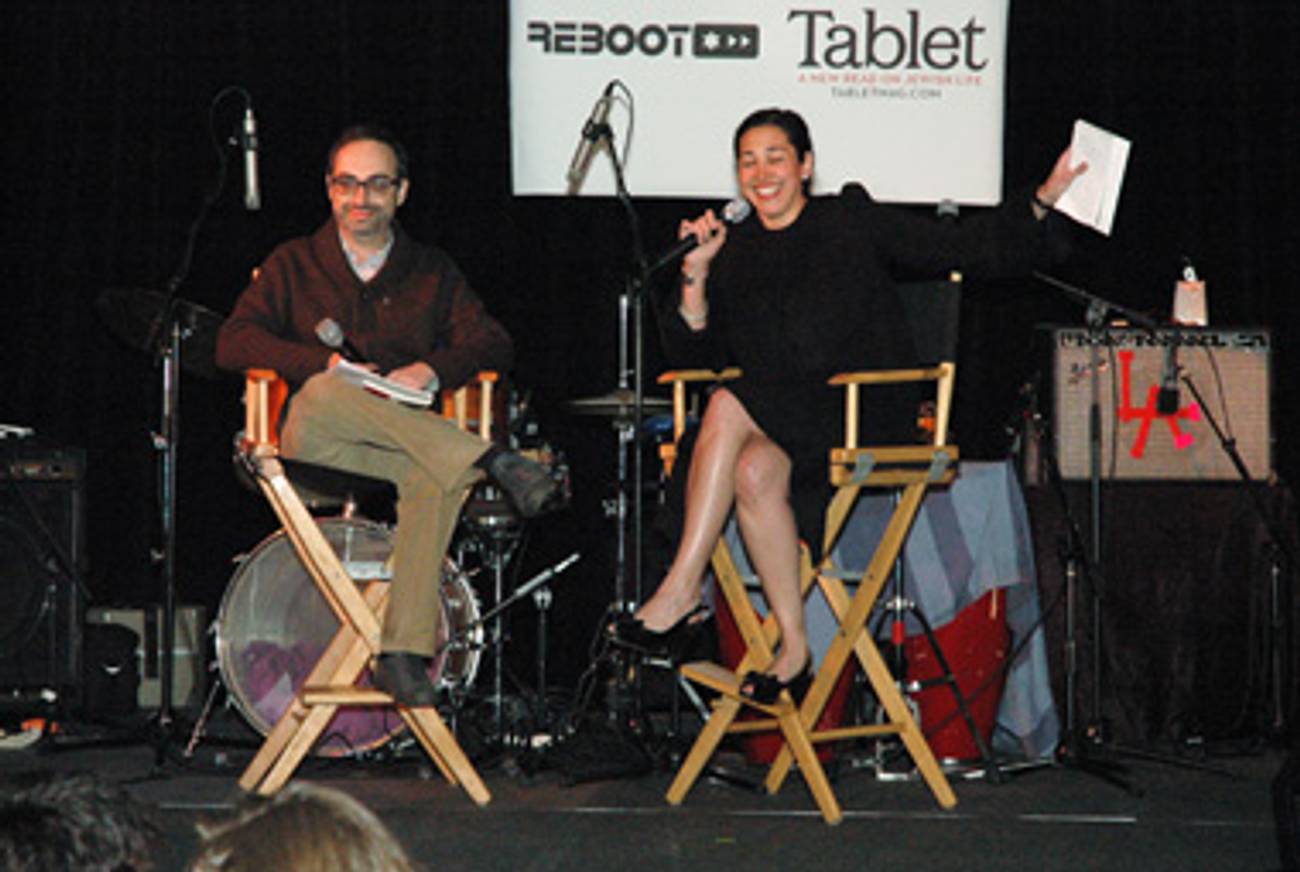DAWN 2010 Celebrates Shavuot
At the mystical intersection of Judaism and science




Moses among the penguins, rabbis beside the swamp! DAWN 2010, the late-night Shavuot arts festival that Tablet Magazine cosponsored (along with Reboot) Saturday night at the California Academy of Sciences in San Francisco, was full of surprising juxtapositions of Jews and fauna. (For all photos, check our our Facebook album.)
One of the first of the evening’s dozens of events was the world’s second performance of Everything’s Coming Up Moses, which tells the story of the Exodus in under an hour—with inspiration from the music of Gypsy. The musical, premiered by Tablet Magazine in New York this Passover and written by contributing editor Rachel Shukert, was, naturally, performed in the African Hall beneath a taxidermied leopard that was hanging out in a tree overhead. (The very-much-alive penguins strutted at the other end of the hall.)
Amelia Klein
Back in the main atrium (no animals immediately in sight), Gary Shteyngart chatted with editor-in-chief Alana Newhouse and shared excerpts from his forthcoming novel, Super Sad True Love Story. (See main picture.) He was followed by an interview (that quickly turned into a performance) with comedian Sandra Bernhard, who spoke with fellow outré Jewish performer Amichai Lau-Lavie about being both an earnest devotee of kaballah and a hilariously cynical sometime-member of Chabad and the Kabbalah Center. Bernhard, it turns out, is also a longtime Shavuot fan: She first celebrated the holiday Israeli-style on a kibbutz, then became interested in its kabbalistic interpretation, which holds that Shavuot—coming up this evening—offers access to the Ten Utterances, and potentially to immortality.
Sandra Bernhard
Another highlight was Tablet columnist Eddy Portnoy’s disquisition on the 19th-century pseudoscientific field of nasology, which held that a person’s character traits can be determined through the size and shape of his or her nose. (The Jewish nose, of course, was classified as the “commercial” nose, indicating, as Portnoy put it, “strong mercantile acumen.”)
Eddy Portnoy and Gary Shteyngart
No science museum, of course, is complete without its planetarium, which at DAWN became the screening room for video installations from Israel as well as Maurice at the World’s Fair, a Spike Jonze tribute to Maurice Sendak. But the planetarium was at its trippy best during one of the last events of the evening, Tablet Magazine contributing editor Rodger Kamenetz’s introduction to the cosmology of kabbalah—in the form of an astronomy show. Kabbalah, Kamenetz explained, is uniquely suited within religious mythology to helping us conceptualize the fact that we live in a constantly expanding universe—like the Big Bang theory, kabbalah holds that the universe began as a single point of energy (what physicists call “singularity”) and moves ever outward.
With stars still flashing before our eyes, we went to bed. Shavuot hasn’t even started yet, and there’s a lot more staying up to do.
Ari M. Brostoff is Culture Editor at Jewish Currents.